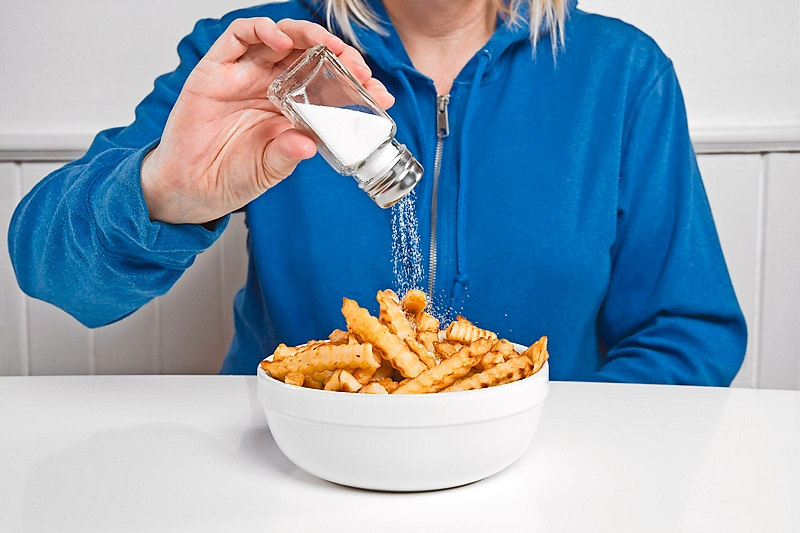Sodium Surplus—The Health Hazards of a High-Sodium Diet
By Mary Kay Kleist
May 2015 View more Health & Fitness
 If you’re like most people, you’re getting far more sodium in your diet than is recommended and that could lead to serious health issues. The National Heart, Lung and Blood Institute reports that nine in 10 Americans take in more salt than they need on a daily basis. They recommend limiting your intake to one teaspoon or less per day.
If you’re like most people, you’re getting far more sodium in your diet than is recommended and that could lead to serious health issues. The National Heart, Lung and Blood Institute reports that nine in 10 Americans take in more salt than they need on a daily basis. They recommend limiting your intake to one teaspoon or less per day.
Salt Consumption
Your body needs some sodium chloride (salt) for a number of reasons. The right amount can help balance fluids in your body, maintain electrolyte balance, and is an important part of proper muscle and nerve function. Your kidneys keep track of sodium amounts stored in your body. When levels are low, your kidneys keep the sodium. But when levels are too high, your kidneys get rid of the excess in urine. If levels get out of hand, sodium can build up in your blood, creating serious health problems. Diabetics, people over age 50, those with high blood pressure, and African Americans are at the highest risk for developing health problems related to salt consumption. “Our food supply is super saturated with salt and we take in significantly more than we need. Compared to the recommended 1,500-2,000mg per day, the average American consumes anywhere between 3,500-4,000mg per day,” said Melanie Betz, registered dietician, Rush University Medical Center.
Health Hazards
Too much salt causes blood vessels to constrict. This can be dangerous because the heart needs to work extra hard to pump blood throughout the body. This can lead to numerous health issues such as hypertension. “High blood pressure is very dangerous. It puts unnecessary strain on your heart. This then increases your risk for blood vessel damage, heart attack, stroke, kidney damage, and even dementia,” said Betz. Excessive amounts of salt are particularly hard on both the nervous system and the circulatory system. It can also disrupt the delicate balance of the lymph system. High amounts of salt in the diet can also create water retention, causing excessive swelling. Even PMS, headaches, anxiety, and depression have all been linked to a sodium overload. Sodium and potassium have opposite effects on your heart. High potassium intake can relax your blood vessels. This process will, in turn, excrete the extra sodium resulting in a decrease in your blood pressure. We need far more amounts of potassium than sodium every day. But according to experts, the American diet is the opposite.
How Much is Too Much?
It’s difficult to know if you’re eating too much salt. You might think you have a low sodium diet because you don’t add any salt to your food on your plate. Approximately 80 percent of the salt in our diet already exists in our food. “Although avoiding the salt shaker is a good start, there is likely quite a bit of hidden salt in your food already,” said Betz. “The only way to tell how much salt you are consuming is to read nutrition labels for sodium content. Some general tips for keeping salt low in your diet is to avoid processed food or foods with sauces and seasoning already added. Focus on eating lots of fresh or frozen fruits and vegetables and lean proteins. Avoid or rinse canned food. When eating out, choose items prepared as simply as possible to avoid extra salt, or share an entrée to cut the salt in half and also help keep calories in check,” said Betz.
Healthy Salt Alternatives
According to Betz, you can replace the salt shaker with natural seasoning options. For example, experiment with new flavors by adding dried or fresh spices and herbs to your food. Use salt-free seasoning blends such as Mrs. Dash. Add lemon or lime juice to fish, meats, or salads. Try a growing variety of flavored vinegars such as balsamic, cider or rice wine.


